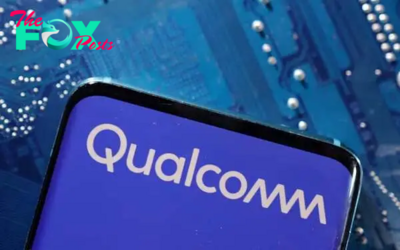Technology
Ultrafast laser-powered 'magnetic RAM' is on the horizon after new discovery
Scientists have discovered a new mechanism in which a concentrated laser beam can change the magnetic state of a solid material. The finding could one day be harnessed in ultrafast computing memory, the researchers say.
The scientists formulated a new equation that describes the link between the amplitude of the magnetic field of light, its frequency and the energy absorption properties of a magnetic material. The scientists published their findings in a study on Jan. 3 in the journal Physical Review Research.
The equation is "completely new and also very elemental," study co-author Amir Capua, a physics professor at Hebrew University of Jerusalem, told Live Science.
Although the discovery builds on the field known as "magneto-optics," this represents a new paradigm because scientists didn't previously understand that the magnetic component of a rapidly oscillating light wave can control magnets, he said. The equation describes the characteristics of this interaction.
Computer memory uses miniature electromagnets that are magnetized with voltage to enable the binary states of "on" or "off" to encode data, which are read and reinterpreted by a processor as 1 or 0.
The most common computing memory, like those found in laptops or phones, comes in the form of dynamic random access memory (DRAM). This is volatile, meaning when power is switched off, all data held is lost, but it's easier to engineer, uses common materials and has low error rates — and those few errors are easy to detect and fix.
The new finding is more relevant for a technology called magnetoresistive random access memory (MRAM), which is a non-volatile memory more commonly used in spacecraft as well as military and other industrial applications, according to MRAM-info.
-

 Technology6h ago
Technology6h agoUS judge questions Google, DOJ in market power trial closing
-

 Technology6h ago
Technology6h agoQualcomm jumps as AI sparks rebound in Chinese smartphone market
-

 Technology11h ago
Technology11h agoBoeing’s Starliner is about to launch − if successful, the test represents an important milestone for commercial spaceflight
-

 Technology1d ago
Technology1d agoWhat You Need to Know About the New WhatsApp Features
-

 Technology1d ago
Technology1d agoBrain cancer in children is notoriously hard to treat – a new mRNA cancer vaccine triggers an attack from within
-

 Technology1d ago
Technology1d agoElon Musk's Tesla overhaul hits executive bench he touted
-

 Technology1d ago
Technology1d agoEx-Google workers say firings for protesting Israel contract were illegal
-

 Technology1d ago
Technology1d agoHere’s All the Countries With TikTok Bans as Platform’s Future in U.S. Hangs In Balance



























